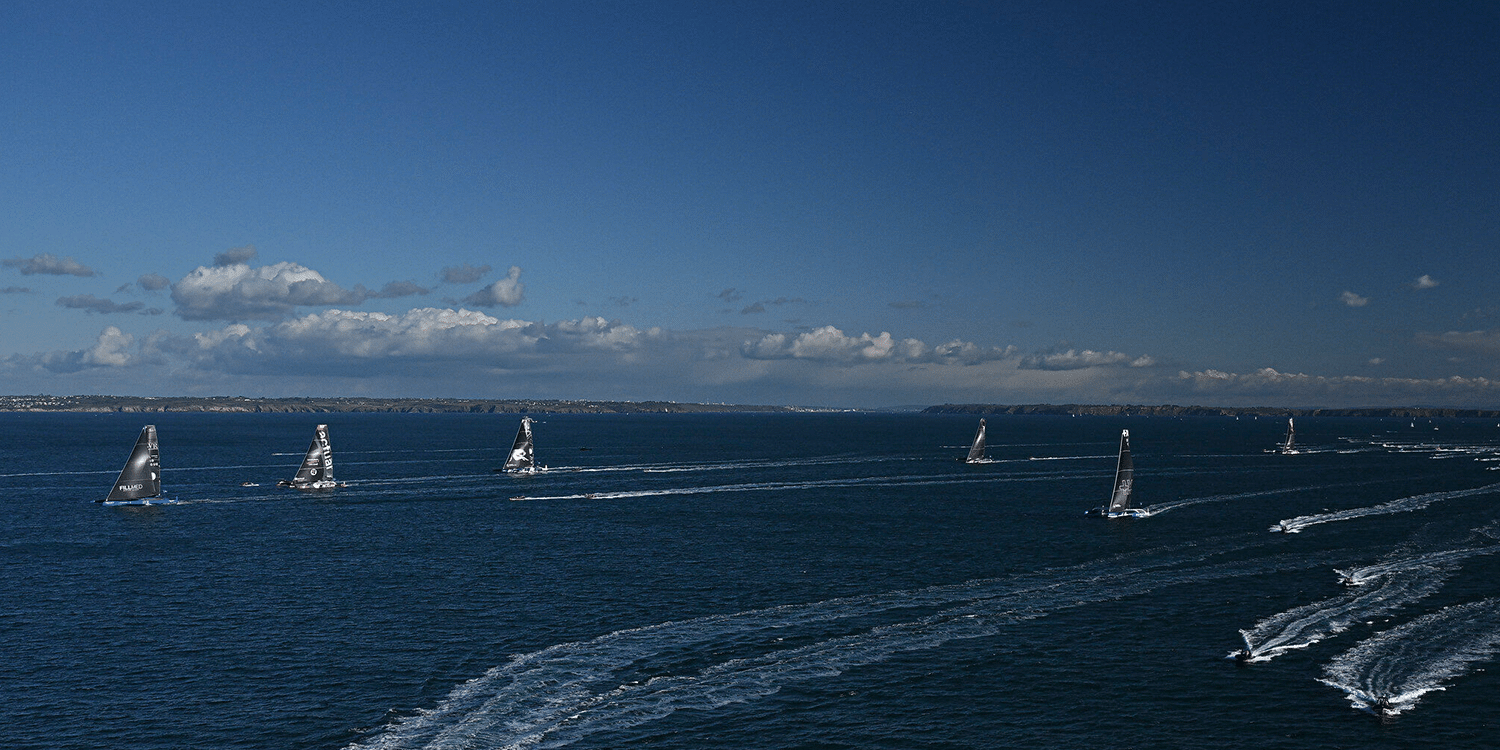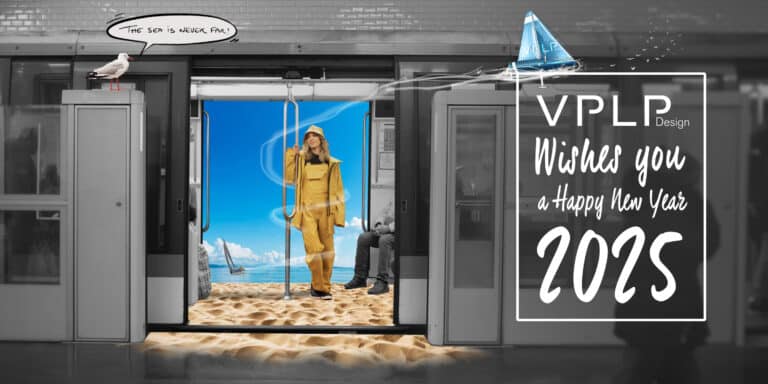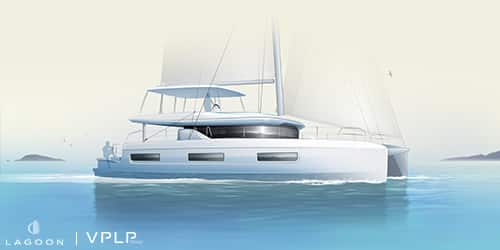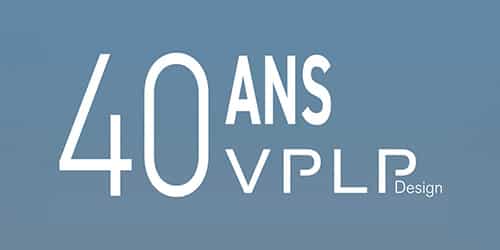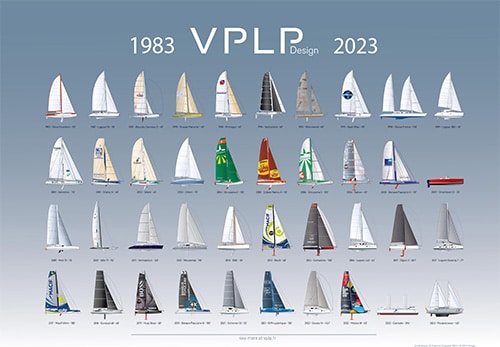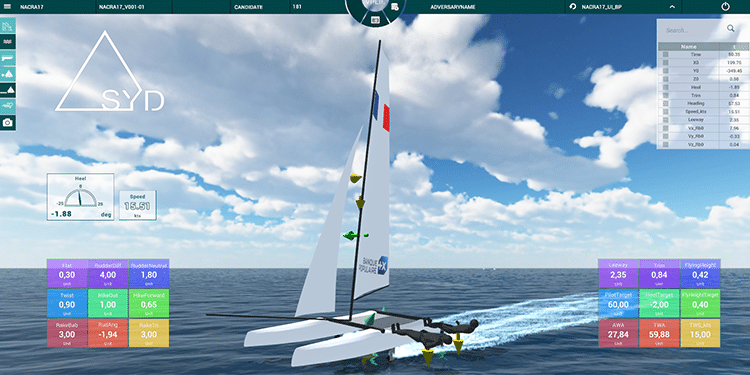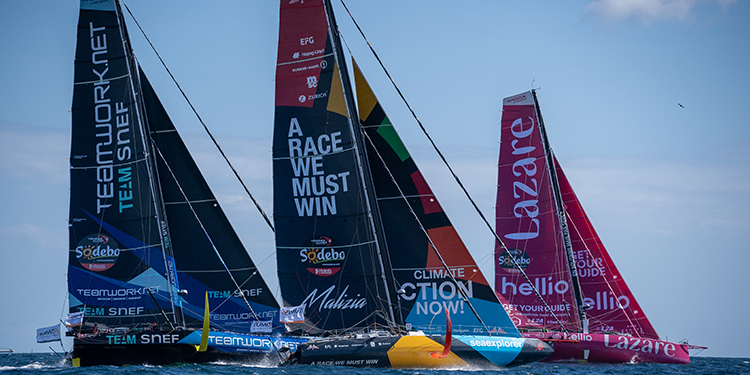Coming to a close in mid-March with the arrival of the fifth and final skipper (Eric Péron), the Arkea Ultim Challenge-Brest, the first ever single-handed Ultim race round the world, has been a rich source of information for VPLP Design. At a time when several teams are already preparing their participation in next winter’s Jules Verne Trophy, VPLP’s Xavier Guilbaud and Xavier Guisnel (partner naval architect and partner engineer) and Paul Kerdraon (performance engineer) discuss the technical aspects and future prospects of the race.
To say that the winter routine of the teams at VPLP Design was steeped in the Arkea Ultim Challenge-Brest is an understatement. “The map was totally addictive, and it goes without saying that, for both us and the teams, this was a high-stakes course,” says Xavier Guilbaud. “All eyes were on us, so seeing five of the six trimarans cross the finish line was particularly satisfying. Obviously, Banque Populaire XI’s pit stop occurred too early and SVR Lazartigue’s retirement was especially disappointing for us.”
Interviewed upon arrival at Brest, Charles Caudrelier (whose performance is applauded by everyone at VPLP) discussed the breathtaking duel that saw him battle Tom Laperche for the first eleven days of the race. In particular, he evoked his sense of relief when SVR Lazartigue was required to reduce pace after colliding with an unidentified floating object (UFO), the risks associated with maintaining such an intense pace being particularly acute for both skippers. Often sailing close to their target speeds “they drove their boats impressively over a sustained period,” says Xavier Guilbaud. “They weren’t far off the 24-hour Distance Record and in particular, Armel logged more than 800 nautical miles a day on several occasions in the Indian Ocean.”
Facts that demonstrate the boats have reached maturity or as Xavier Guisnel (VPLP partner engineer) would put it: “the fruit of the enormous progress achieved over the last five years, of considerable work, and of the productive discussions with the teams sustained over the duration.” For Xavier, SVR Lazartigue’s high-speed accident is nothing less than “a very serious warning with a thankfully fortunate outcome thanks to Tom’s cool head, the reasonable weather conditions and the relative proximity of South Africa.”
Mer Concept will start rebuilding the blue trimaran’s bottom and adding the reinforcements. The other VPLP-designed Ultims will also be getting structural reinforcements. “All the teams are continuing to invest in systems to detect and avoid UFOs at sea. As for VPLP, we need to work on the impact force calculations so we can propose more resilient solutions in the case of a collision, such as a double centerboard case. The watertight sections must also be better compartmentalized to limit flooding and the problems associated with the free surface effect,” says Xavier Guisnel.
Use servos to make systems more reliable?
Another lesson learned from the round-the-world race is the cruciality of system robustness throughout the vessel. “Several boats were put at a disadvantage for simple fittings failures. I’m thinking in particular of the systems for raising and lowering the appendages. The next step, therefore, is to investigate the fittings,” says Paul Kerdraon. “While we are familiar with their theoretical working loads, the slightest deterioration affects the boat’s capacity to fly. Likewise, we need to continue to make progress on the conservation of the surface state of the appendages because any deterioration accentuates cavitation phenomena at high speeds (above 40 knots) and limits the readiness for taking off at low speeds (25–28 knots).”
Especially with the prospect of SVR Lazartigue and Banque Populaire XI competing in next winter’s Jules Verne Trophy where all these fittings will be worked much harder than on a single-handed race. “We need to discuss these fittings with the teams beforehand, using the data summaries from the race, because the boats will be driven much harder by a full crew,” says Xavier Guilbaud.
Prohibited on Ultim class boats, the servo-control of appendages is, however, authorized by the Jules Verne Trophy rules of racing. “Several teams have been using SYD, our dynamic simulation software, to determine the best configurations of the appendages in connection with the autopilot,” says Xavier Guisnel. Tested in 2023 prior to the Arkea Ultim Challenge-Brest, and then dismantled for the race, these systems are a new and not-to-be-ignored avenue for enhancing performance. Paul Kerdraon says: “It isn’t in medium winds on a smooth sea that you will observe a difference. But once the conditions become very intense, the delta between having or not having servos can amount to several knots.”
